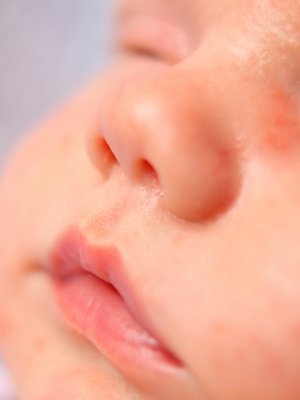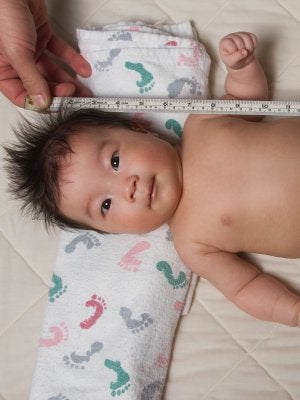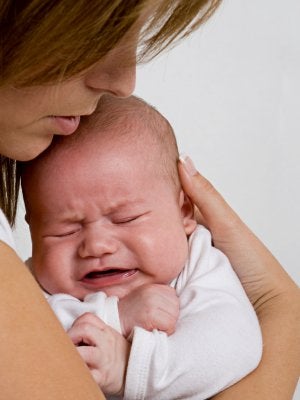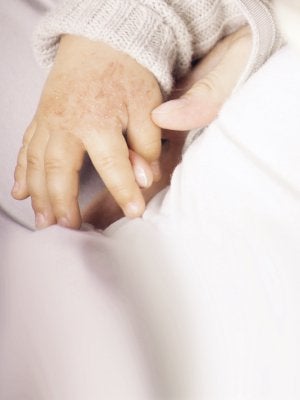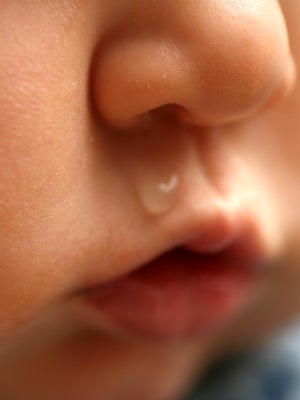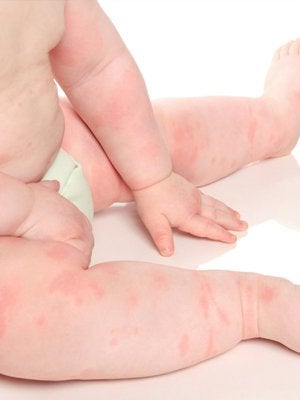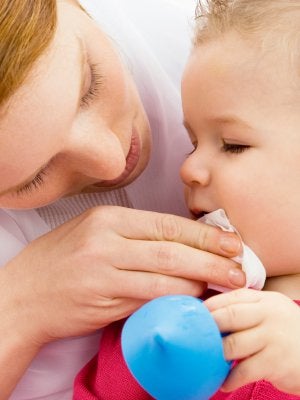WHEEZING

We believe breast milk is the best food for infants. When in consultation with their healthcare professional, mothers and families find that optimal breastfeeding is not possible due to their infant’s medical condition, formulas for special medical purposes play a vital role in providing essential nutrients to infants. We have a global commitment to market breast-milk substitutes responsibly.
Wheezing is a high-pitched, whistling sound due to a narrowing of the airways, which makes it difficult to breath.1 Wheezing typically occurs when breathing out (expiration) but can also occur when breathing in (inspiration). It is a common problem in infants and young children and approximately 25–30% of infants will have at least one episode of wheezing during infancy.2 Children wheeze more often than adults purely because of the physiological differences in the size of their airways.2
What causes wheezing?
Asthma is the most likely reason for recurrent wheezing in children younger than five years.2 Allergies (e.g. dust or pollen), respiratory infections, or the cold virus are all common causes.2
Wheezing as a symptom of Cow’s Milk Protein Allergy
Up to 30% of infants with Cow’s Milk Protein Allergy (CMPA) will present with a respiratory symptom such as wheezing.3 Wheezing can be triggered by the ingestion of cow’s milk protein. It is also an antibody IgE-mediated response to the cow’s milk protein that will manifest itself rapidly (30 mins to 2 hours) after cow’s milk ingestion.4
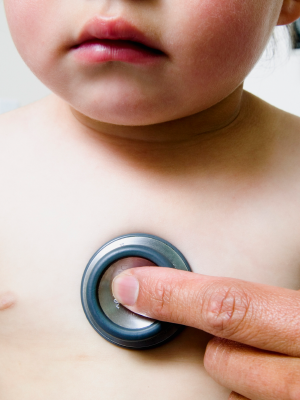
The majority of infants affected with CMPA have at least two symptoms affecting at least two different organ systems.5,6 If, in addition to respiratory symptoms such as runny nose or sneezing, your patient shows any of the signs and symptoms that can be related to CMPA7 (see below), you can use the CoMiSS® tool8 to score the combination of their symptoms and assess the likelihood of CMPA.
Signs and symptoms related to CMPA7
- Gastrointestinal/Digestive: Colic, vomiting, reflux, regurgitation, anorexia, diarrhea, constipation
- Respiratory: Chronic cough, wheezing
- Skin: Atopic dermatitis, urticaria, angioedema
- General: Failure to thrive, anaphylaxis, insomnia, inconsolable crying
How to score this symptom with the CoMiSS® tool
· The combination of respiratory symptoms is given a score
· The higher the score the greater the severity of symptom
· In addition to the respiratory symptoms, if any of the following signs or symptoms related to CMPA are also present, they should also be given a score using the CoMiSS® tool. These include diarrhea, constipation, regurgitation and skin (atopic dermatitis and urticaria) symptoms
CoMiSS® awareness tool
The Cow’s Milk-related Symptom Score (CoMiSS)® is a simple, fast and easy-to-use awareness tool designed to help you more easily recognise the signs and symptoms that can be cow’s milk-related in infants and young children.

If you suspect your patient is suffering from symptoms that may be suggestive of CMPA, use the CoMiSS® tool to score and assess the likelihood of CMPA.
OTHER SYMPTOMS OF COW'S MILK PROTEIN ALLERGY
|
References |
|
1. MayoClinic Wheezing 2014. http://www.mayoclinic.org/symptoms/ wheezing/basics/definition/sym-20050764 (Accessed February 2016) 2. Weiss LN. Am Fam Physician. 2008;77(8):1109–14 3. Vandenplas Y., et al Arch Dis Child 2007;92:902–8 4. Caffarelli C., et al. It J Pediatr. 2010;36:5 5. Lifschitz C. and Szajewska H. Eur J Pediatr. 2015;174:141–50 6. Høst A. Pediatr Allergy Immunol. 1994;5:1–36 7. Koletzko S., et al. J Pediatr Gastroenterol Nutr. 2012;55(2):221–9 8. Vandenplas Y., et al. Acta Paed. 2015;104:334–9 |

